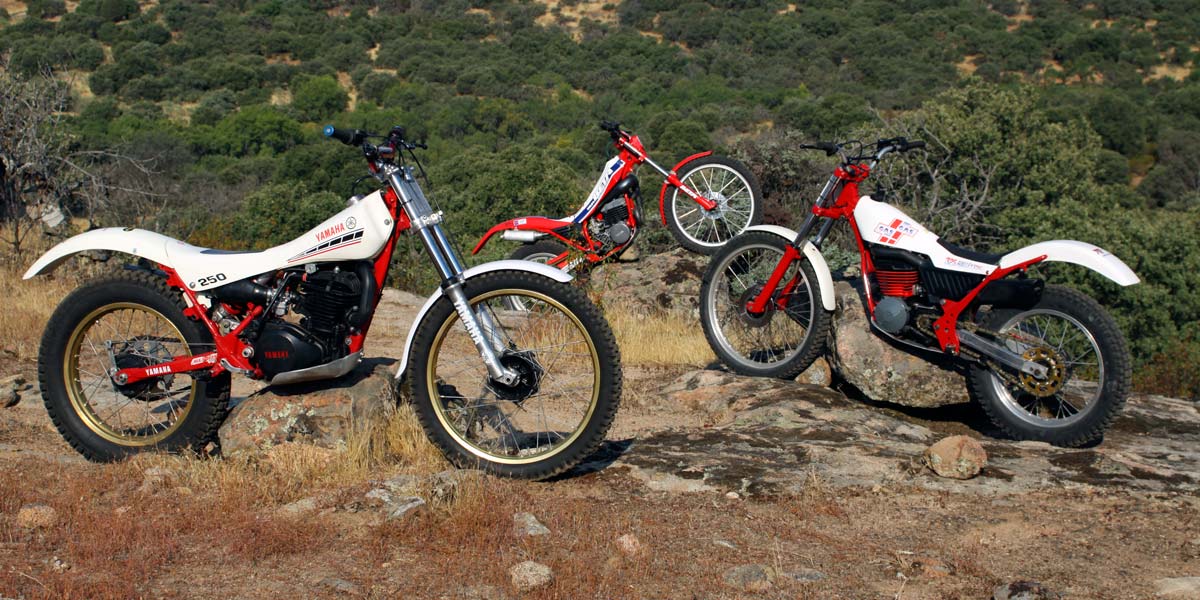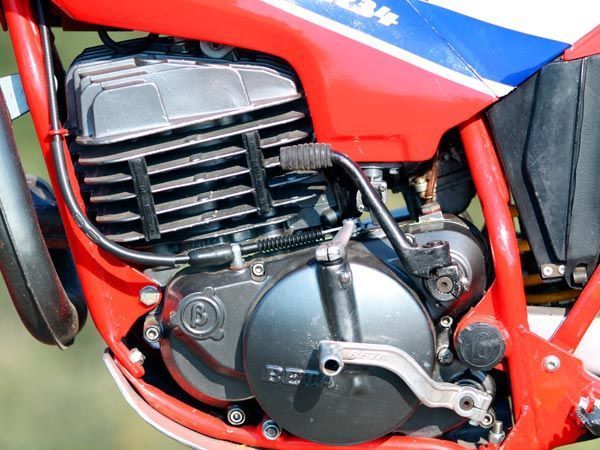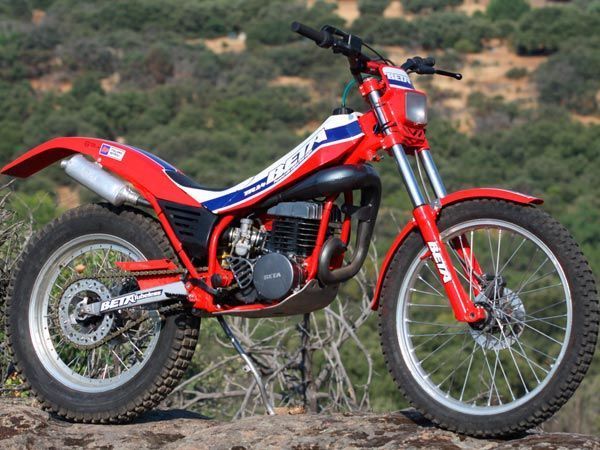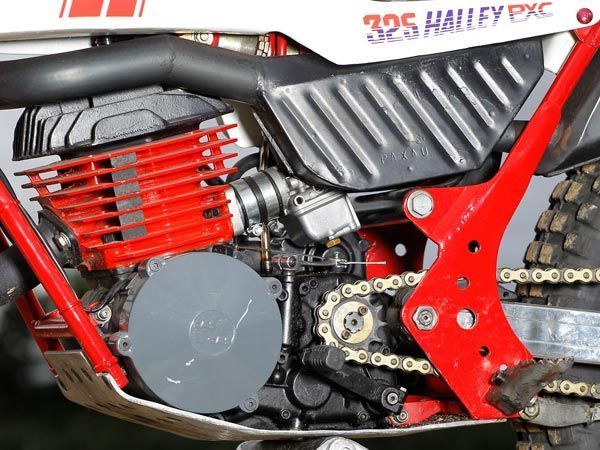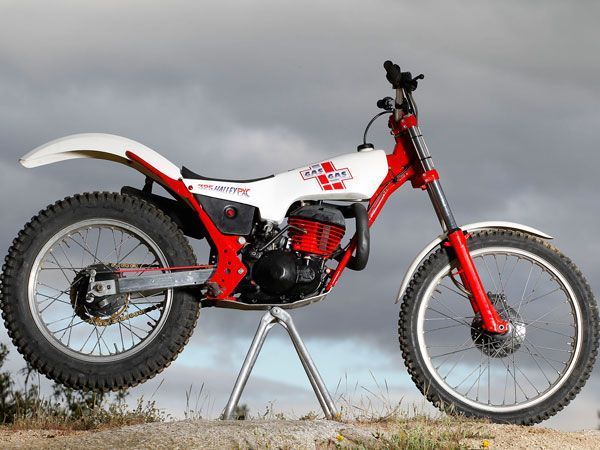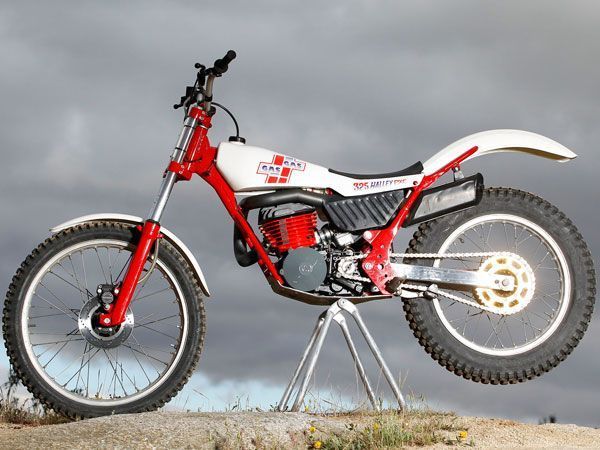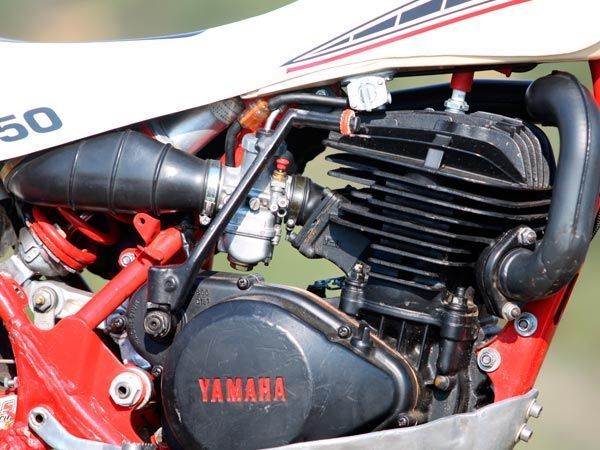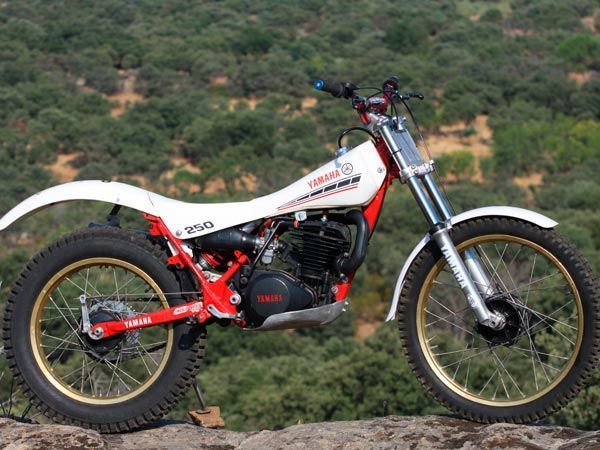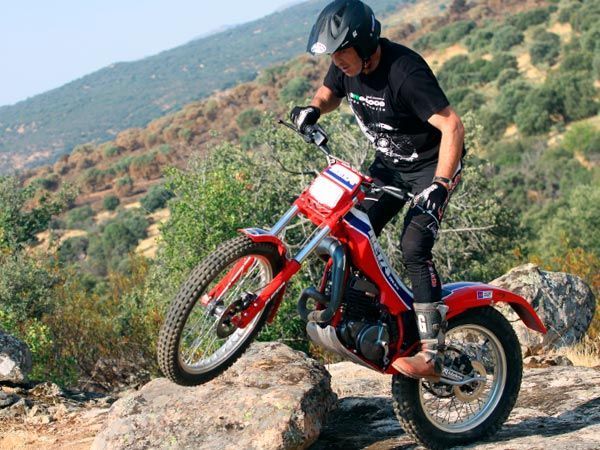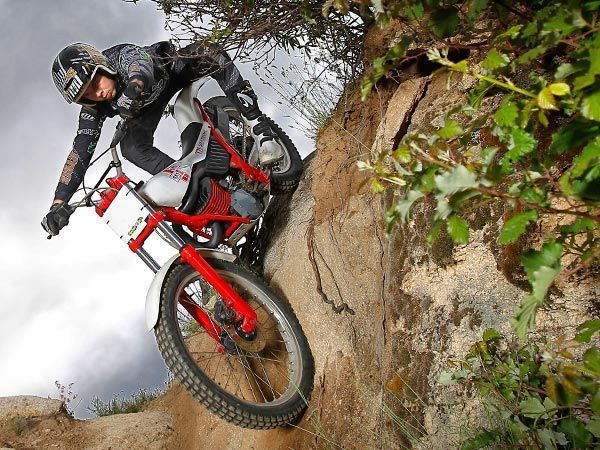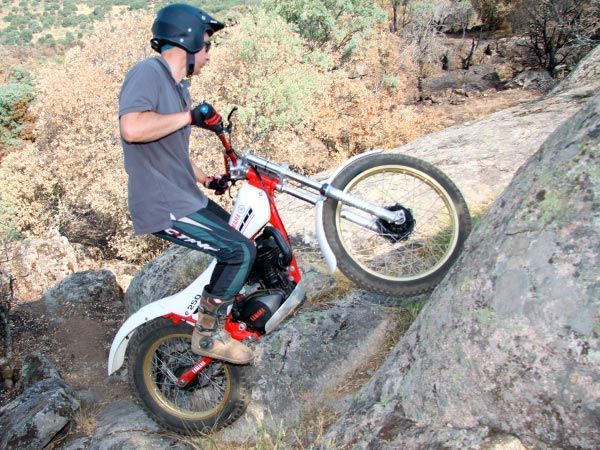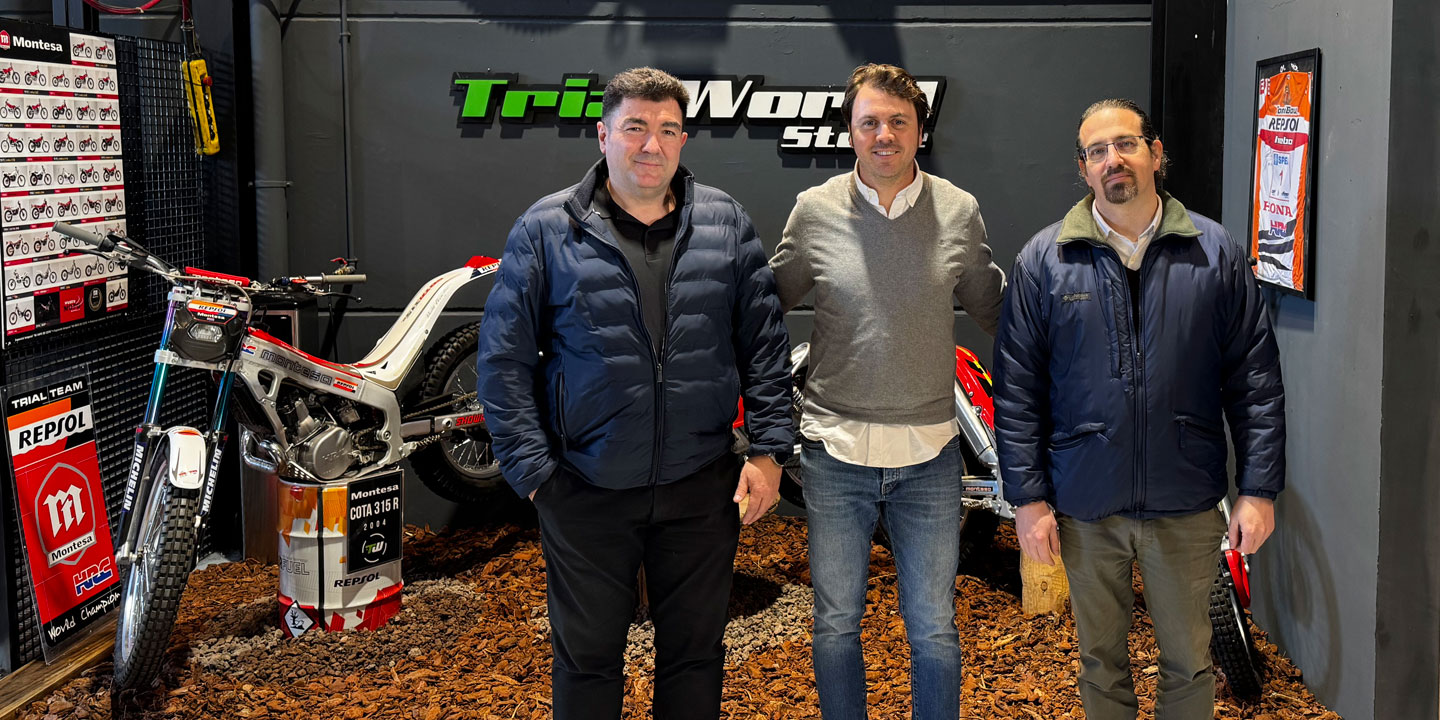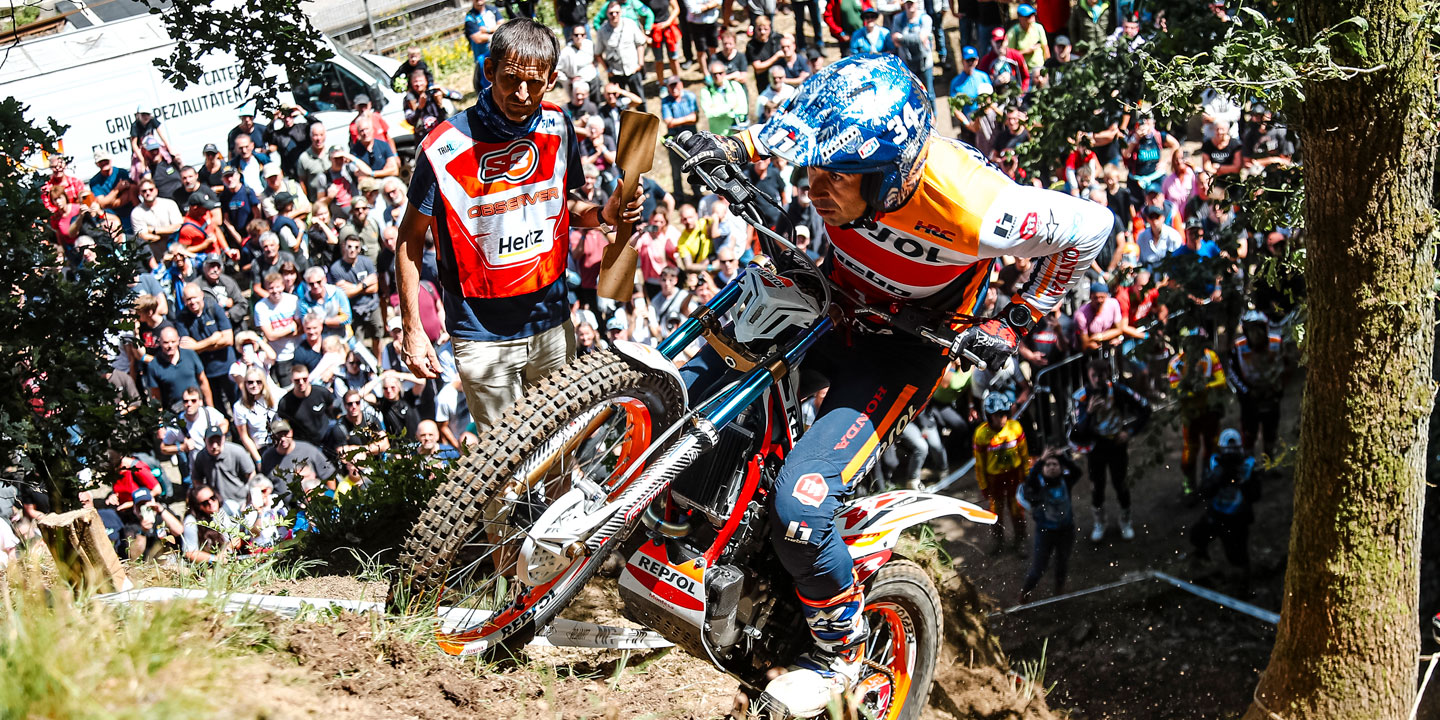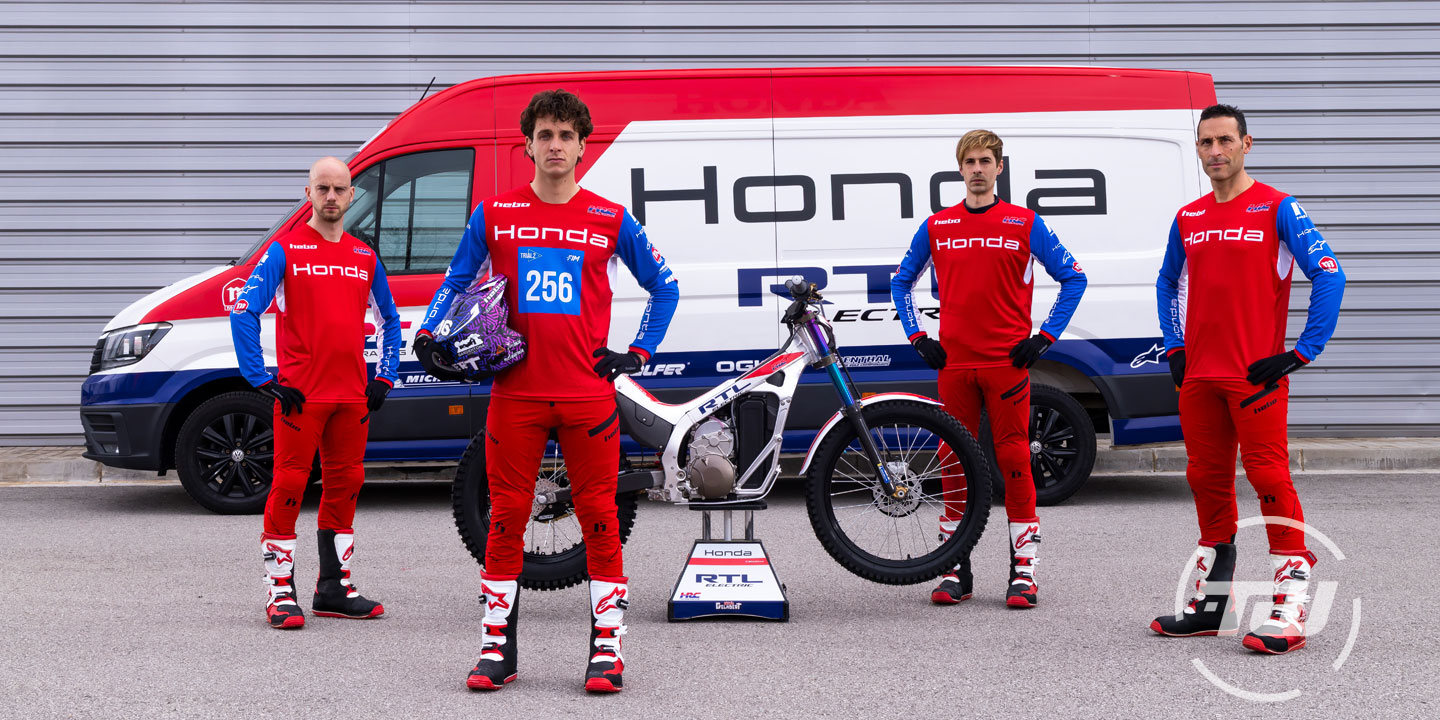The large influx of fans to the Classic Trial competitions and meetings is nothing more than a representative sample of the growing passion for the models that dominated the market three and four decades ago. Curiously, it is no longer uncommon to find more entries in classic competitions than in modern ones, nor is it strange to make disbursements, previously unthinkable, to prepare a classic motorcycle.
In the midst of this fervor, a new trend and opportunity emerges: the post-classics. Bikes that currently do not meet the technical restrictions to participate in a classics competition (double shock absorbers and drum brakes), are increasingly beginning to emerge in a new category, restricted to air-cooled motorcycles. We are talking about bikes that have truly marked the transition from the
Classic Trial
, more dynamic and tracked, to the modern Trial.
On the other hand, they are the protagonists of brilliant duels in competition at the hands of institutions such as Ahvala, Tarrés, Bosis, Gorgot, Gallach and many others. Nowadays they can be purchased at a more affordable price than a “pure classic” and can have just as much or more fun.
To see how it feels to be on one of these bikes, we have gathered three emblematic models to check their abilities together and thus be able to draw interesting conclusions. In addition, in this exclusive report we have the collaboration of the most successful rider in history, Jordi Tarrés, who will tell us about the bike with which he won his first world title: the Beta TR 34.
THREE EMBLEMATIC MODELS OF THE EIGHTIES
Our protagonists came off their respective assembly lines in the eighties and are as follows:
The Beta TR34 was world champion under Jordi Tarrés in 1987. First of all, the Beta TR 34, a bike that was world champion in 1987 in the hands of Jordi Tarrés himself. The second, the Gas Gas Halley 325 PXC from 1986 whose particularity is being the first Trial model manufactured by Gas Gas. In third and last place, the 1987 Yamaha TY 250, a model that was the continuation of the good work done by the Japanese brand throughout the seventies.
Before we get into dynamic sensations, let’s take a brief look at the history of their respective brands and understand the context of these brilliant post-classics.
BETA AND THE TECHNICAL TRANSITION LINKED TO JORDI TARRÉS
Beta has always been associated with the history of two-wheelers. It was born in Florence in 1904 from the beginnings of its founding partners Bianchi Enzo and Tosi Arrigo and dedicated himself to the construction of handmade bicycles.
In the 1940s, he began to manufacture the first motorcycles by applying a roller motor to the rear wheel of one of his bicycles. In the 1960s, Beta began the production of its own engines that would power all the vehicles in its production, also continuing with the escalation in sporting conquests.
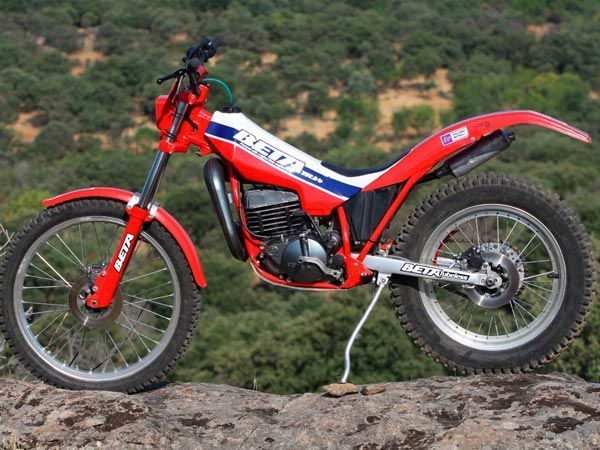
It was in the 70s when Beta specialized in off-road and began an active participation in the world of competition, where the figure of Jordi Tarrés stands out, already at the end of the 80s, who would obtain 4 world titles at the hands of the Italian models.
The evolution of the TR models was rapid. In 1986, just three years after the launch of the first Trial model, our protagonist rolled off the assembly lines, which was the fourth model that Beta manufactured in this specialty. Not surprisingly, the Beta TR 34 was the most successful model to date, with which, in addition, Jordi Tarrés won his first world title in 1987.
Spare parts for Trial Beta
TRIAL MODELS MANUFACTURED BY BETA
Beta TR240, (1983-4)
Beta TR32, (1984-5)
Beta TR33, (1985-6)
Beta TR34, (1986-9)
Beta TR35, (1989–91)
Beta Zero, (1989–92)
Beta Synt, (1992-4)
Beta SuperTrial, (1992-3)
Beta Gara, (1993-4)
Beta Techno, (1994-9)
Beta Rev-3, (1999–2008)
Beta Rev3-4-stroke (2007–08)
Beta Evo 2T and 4T (2009 – present)
GAS GAS AND ITS STRENGTH FROM THE ORIGINS
The Halley 325 PXC was the first model mass-produced by Gas Gas
Gas Gas emerged after the disappearance of Bultaco due to financial problems, when two of its agents, Narcís Casas and Josep Pibernat, found themselves with a store but no product to sell and decided to embark on a project to manufacture trial bikes to sell in their store.
Gas Gas has been manufacturing and selling motorcycles since 1985. Although this year the Girona-based brand brought its first prototype with a Villa engine to the Barcelona Motor Show, this model never went into series production and would be our protagonist, the Halley 325 PXC, the first to leave the assembly lines.
Spare Parts for Trial Gas
TRIAL MODELS MANUFACTURED BY GAS GAS
Gas Gas Halley 325, (1985 – 86)
Gas Gas Trial 327, (1988 – 1991)
Gas Gas Trial 250, (1989 – 1991)
Gas Gas Delta GT, (1991)
Gas Gas Contact GT, (1992 – 93)
Gas Gas Contact JT, (1994 – 95)
Gas Gas Contact JTR, (1996)
Gas Gas Contact JTX, (1997)
Gas Gas TX, (1998)
Gas Gas TXT, (1999, 2000)
Gas Gas TXT Edition, (2001 – 02)
Gas Gas TXT Pro, (2002 – present)
YAMAHA AND TRIAL. A STORY OF PASSION LINKED TO MICK ANDREWS
Yamaha’s history in Trial dates back to the late 1960s, with the appearance of a DT 250 at the 1968 European Championship event in Montbeliard, France.
Two years later, in 1970, Jean Claude Oliver, sales director of Yamaha France, was contacted by Christian Rayer, then French Trial champion and Montesa rider. He suggested the idea of developing a Trial bike with a Yamaha engine on the same basis as the DT 250 engine, simultaneously evolving the entire chassis of the bike.
Rayer then received a 360cc engine, on which he worked mainly on the exhaust system, carburetion and flywheel. He asks Yamaha for a new gearbox and takes inspiration from some Ossa models when setting up the chassis.
From here, the first prototype was born which, together with the work of the Japanese Takashi Matsui, would give rise to the first model of the Yamaha TY (acronym for Trial Yamaha) in 1972.
A rider of the talent of Mick Andrews, with two European championships and a Scottish victory under his belt, has arrived in the ranks of Yamaha with the aim of developing a racing machine capable of winning races and, consequently, promoting the production model.
After testing a 360cc prototype, the one chosen would finally be a 250cc mechanical, with which he also achieved an extraordinary victory in the French round of the 1973 European Championship. The bike was now ready to start production, for which he introduced some changes to make the bike more accessible, such as the steering angle, suspensions, footpegs and gear ratio.
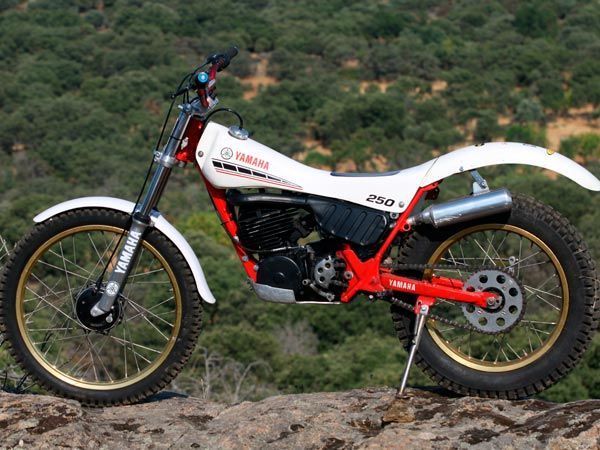
Production of the TY models with dual shock absorbers continued until 1980 with the launch of the TY 250 model 516. The protagonist of our test corresponds to the next generation of TY, now with monoshock, which began to be manufactured from 1983 and maintained a very similar line until the end of the decade.
It was in 1992 that Yamaha launched a new variant of the TY, the TY-Z, whose main hallmark is its dominant aluminium chassis, very much in line with other contemporary rivals such as the Beta Zero or the Montesa Cota 311.
TRIAL MODELS MADE BY YAMAHA
Yamaha ST 250, (1968)
Yamaha TY A, (1974)
Yamaha TY model 516, (1975 – 1980)
Yamaha TY 250 R model 44J, (1984 – 85)
Yamaha TY 250 R model 2AF, (1986)
Yamaha TY 250 R model 3BA, (1988)
Yamaha TY 250 R model 4AJ2, (1988)
Yamaha TY 250 Z, (1993 – 96)
LET’S GO TO THE ZONES!
It’s curious to think about what factors determine the success of a model or a generation over the years. Some of them can be, for example, the charisma of the driver, the sporting successes, the fact that it represents a technological break with its predecessor or others as curious as the extinction of the brand and the automatic revaluation of its models.
What we now call “post-classics”, referring to the models of the eighties with rear monoshock and, in some cases, disc brakes, are beginning to gain a growing prominence among fans.
Obviously, they don’t all have the same charisma, so we searched for three iconic icons of the decade and put them together in a fun day of testing.
BETA TR34. GLORIOUS AND EFFECTIVE
One model that could not be missing is the Beta TR34. The Trial owes a lot to its most popular rider, Jordi Tarrés, who managed to proclaim himself as the first Spanish rider to win a World Championship title (1987), precisely at the controls of a TR34.
Jorge de Lorenzo, a personal friend of Tarrés himself and fortunate owner of the excellent unit that is the subject of this report, made it easy for us to get behind the controls of the Italian motorcycle, which is also completely standard.
The first thing that surprises you about the TR34 is its chromatic. Vivid colours, very “racing” and truly optimal finishes, especially if we take into account that the Beta assembly lines were launched only three years earlier.
The first impression is that this is a bike that is not bulky and agile. The correct riding position accentuates the feeling of being in front of a bike even short between wheels, where maneuverability is one of the main workhorses. Without further ado, we deploy the starter lever – as always, on the left side – and easily this noble 2T mechanic begins to come to life.
Inside the zones you feel that with the TR34 everything is easy. Despite its years, it is a bike that feels comfortable in tight places and invites you to do Trial at a more than considerable level; As you might expect, if the riding is more dynamic, non-stop style, it is highly effective.
However, we are even more surprised by its stability when you stop and the ability to get out of the most problematic points with traction.
In general terms, the most obvious point of improvement is the brakes.
According to Jorge, its owner, with a floating front disc the bike should significantly improve its performance, since the support of the caliper is more homogeneous.
Beyond the model that stars in this comparison, the Achilles’ heel in the TR sagas has been the electrical system, complicating a correct set-up in certain units.
GAS GAS HALLEY 325 PXC. PAVING THE WAY
It seems unbelievable that this Gas Gas Halley was the first motorcycle ever produced by Gas Gas. Under an aesthetic that we believe is correct, the Girona brand conceived a frame of remarkable quality and surprising performance under the baton of the famous J.R. Paxau.
The value of the Halley lies not only in having inaugurated the assembly lines of the Girona brand, but beyond the historical component we find a highly effective model within the areas.
The air-cooled engine stands out for its torque and forcefulness from low revs, without sacrificing good overrev capacity. Its particularity is that the speeds are very short and the higher level riders will find themselves more comfortable driving in high gears, something that would probably be difficult in technical areas if it does not equip such a progressive and effective clutch.
Also surprising is the stability of the set and the nobility that it throws in trial areas, inviting an intuitive and at the same time effective riding. This point, however, can be greatly improved by working on the riding position.
Specifically, the footpegs, in addition to being excessively thin and with little grip, are very high and forward, causing a relatively comfortable riding position, but much improvable in terms of effectiveness and weight distribution.
Braking is not its strong point either, although incorporating the improvement of the floating disc that we already discussed in reference to the Beta TR34, the improvement would probably be noticeable.
YAMAHA TY 250. FULL STOP
Yamaha was one of the earliest brands to incorporate the rear monoshock in its Trial bikes, specifically in 1983. This Yamaha TY would not experience major changes throughout the decade, but it was able to retain a very loyal audience due to its technical and dynamic attributes.
When you get behind the controls of the TY, the first thing that catches your eye is the sensations. At first glance it seems very long, especially if you have just gotten off a bike as contained as the Beta TR34. Within the zones, therefore, it is more cumbersome and forces you to watch the distances to practice a “tracked” Trial, since maneuverability is not its strong point.
The TY gains ground on its rivals in the tough obstacles. One of the keys to understanding why lies in the arrangement of the curious rear shock made up of three linkages and placed in an oblique position. With this configuration it is possible, among other things, to make up for the technical deficiencies of the pilot, helping him in the impulse to the top of the obstacle. A very similar system was inherited by one of its generational replacements, Scorpa SY – from 2001 onwards.
Mechanically, the Japanese engine stands out for its nobility and low noise. It is enough to travel a few meters to appreciate its smoothness and how easy it is to understand the reactions of its mechanics throughout the rev range. The thrust is linear and very progressive, making it an accessible bike for all levels of riding and even successful to escape from the zones and enjoy long excursions.
THE TY 250. FIRST POSTCLASSIC. NACHO CARRO’S OPINION
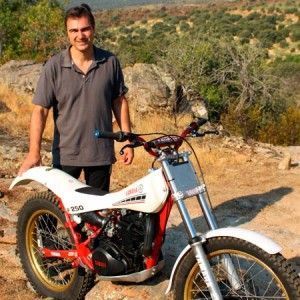
This bike is the result of Yamaha’s long experience in the world of trials that began in 1972 with the first TY developed by the French rider Christian Rahier and later improved by the legendary Mick Andrews, and continued until 1996.
It is a noble, stable bike, with an extraordinary poise that makes it much easier to ride in a classic style, so necessary to face areas of water and mud, with steep climbs. So much so that this Yamaha TY has been until very recently one of the most used bikes in the 6 days of Scotland.
Ever since I saw Gilles Burgat, perhaps the rider with the most elegant riding style in the history of trial, ride a Yamaha TY, I’ve always wanted to try one. Unfortunately it was never a popular motorcycle in Spain, as its commercialization coincided with the launch of the Gas Gas brand with its Halley and to a lesser extent, with the Beta TR 34, but it was and is very popular in France and England.
In short, this bike, due to its design, eye-catching appearance and performance, deserves its own category in the classic trials to compete and measure itself against the other post-classics of its time. There are many riders who have this type of bike in our garages and we are looking forward to competing and enjoying them in the trials.
CONCLUSION. BY JORGE DE LORENZO
Nowadays we call post-classic those motorcycles with monoshock and air cooling (disc or drum brakes). They are bikes that are in no man’s land but that occupied a part of the history of trial. With them you can’t compete in classics and you’re at a clear disadvantage in moderns.
Personally, I think they are the most aesthetically beautiful bikes in the history of our sport because they combine a classic aesthetic but noteworthy performance thanks to their incipient technological advances.
Motorcycles like the Beta TR34, the Fantic 305, Gas Gas Halley, etc… They set a trend that, from my point of view, unfortunately became radicalized to today’s motorcycles that are exclusively for competition.
With these bikes you can still ride a trial but also take a ride through the countryside comfortably seated.
Little by little, they are making a place for themselves as a unique category in the classic trials, we will have to wait to see if they settle or not, but what is clear is that they are motorcycles that continue to attract attention for their beauty and for all the history they have behind them.
JORDI TARRÉS’ OPINION ON THE BETA TR34
TRIALWORLD: Was the ’87 TR34 the bike from your first title, what do you remember about it?
JORDI TARRÉS: Yes, with the TR34 I won the first world championship in 1987, I have only good memories of that bike, specifically that year, because in the following evolutions… for me we went to the worst!
Already in ’86 I started competing with the prototype of what would be the TR34 and from the beginning I found it very good, it was really the motorcycle model that evolved the most, currently all the current trial bikes are close relatives of that Beta…, with the straight shock with linkages, geometries and others very similar.
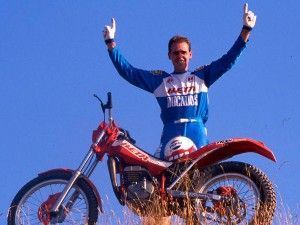
JT: At that time the TR34 took a step forward technically, which the other brands took several years to copy, the suspension system adopted from the cross bikes made the geometry change completely, considerably lengthening the swingarm and thus, much more poise was given to the front end, something that allowed us to overcome much greater obstacles and increase the difficulty of the sections.
TW: Did you have any weaknesses?
JT: Obviously I had points against it, for me one of the worst was the change of geometry, because the part of the head tube was really hanging!!
To make way for the exhaust scarf, little by little you noticed the bike longer and lower, this made its performance change considerably.
The clutch was also very fragile, tending to slip very easily.
TW: The ’87 TR34 was the first in the TR34 series. Did it improve much in later years?
JT: As I mentioned before, I think the best one was the one from ’87, since it evolved from my point of view wrongly, looking for more power and lightness, losing finesse and effectiveness.
Jordi Tarrés.
Text: David Quer
Photos: David Quer & Javier García
Action: David Quer, Jorge de Lorenzo and Nacho Carro
Collaborators: Jordi Tarrés
